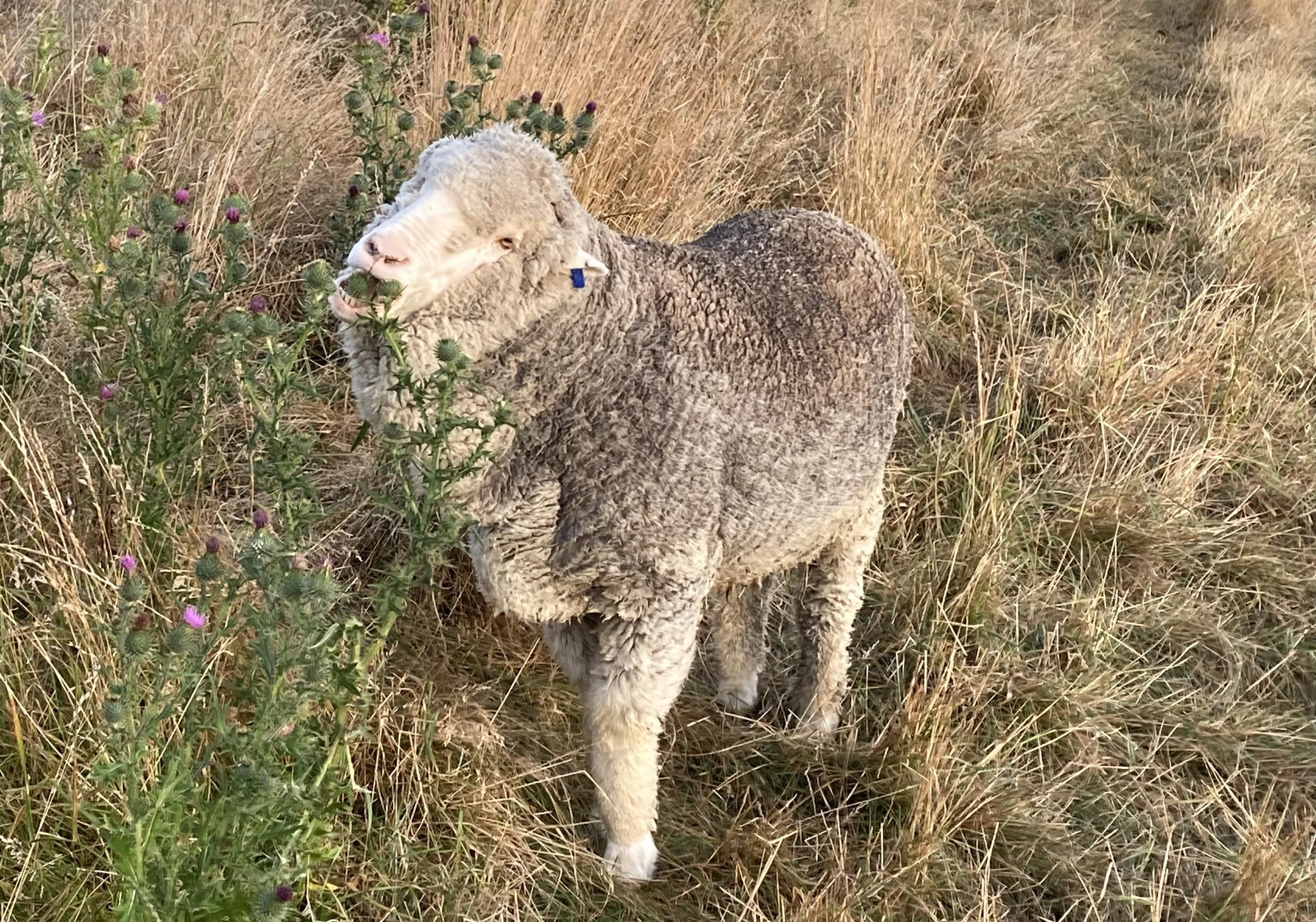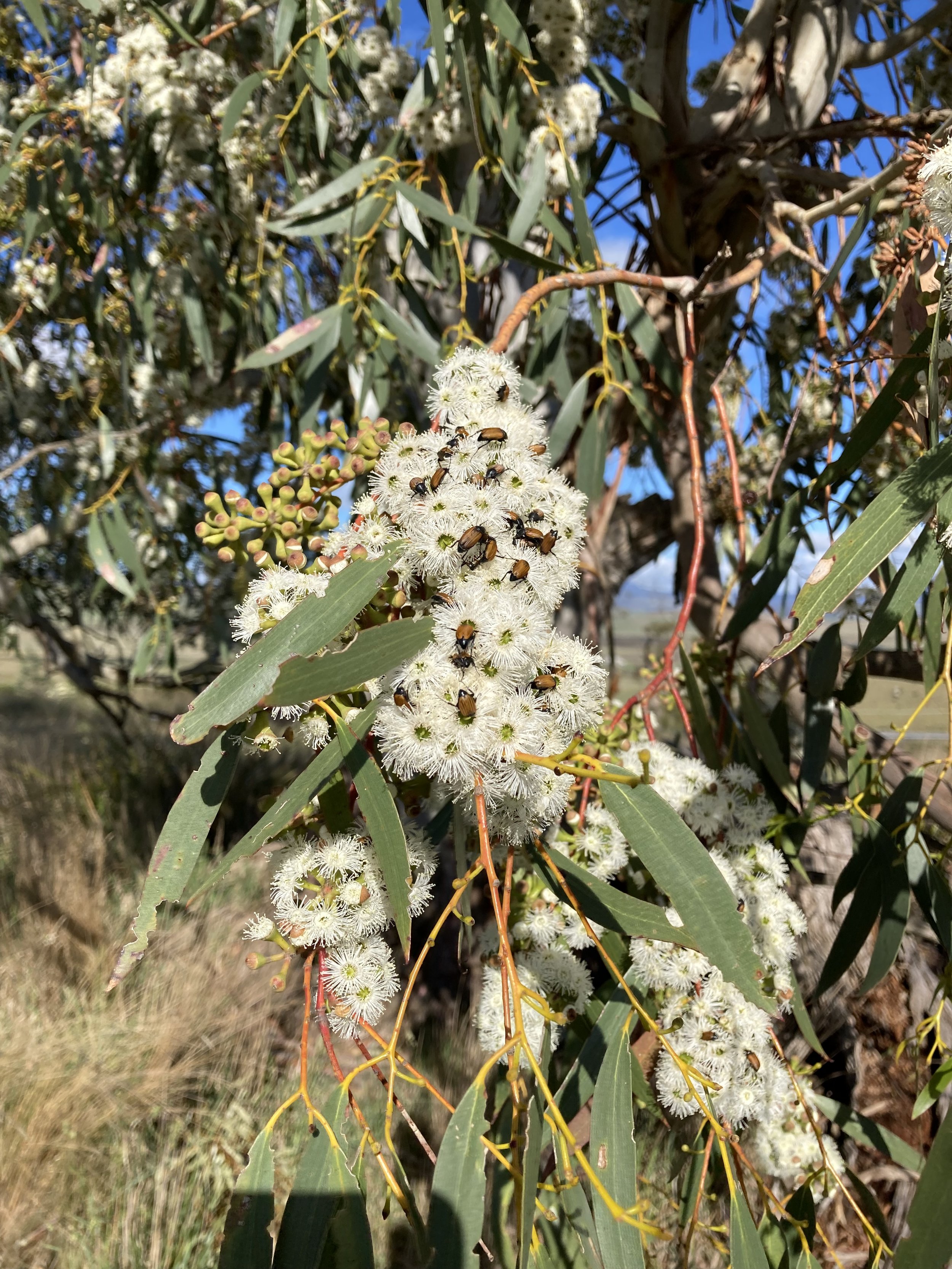I’m starting to think about writing the book I’ve been thinking about for 10 years. Only this time, it’s serious enough for me to gather all my source material, create a timeline, start re-reading the 100+ Yarns from the Farm and Come Shepherding posts, and sketch out different themes in my head.
Why now? Well, in the process of accepting that I’m not going to live forever, I decided to question what I want to do with the time I have left—which I’m hoping will be a good 20 years, nearly as long as I’ve been farming.
The farm itself has always felt like my legacy—proof on the ground that there is a different way to farm—caring for the environment and the animals to the benefit of both, and giving me the pleasure of seeing both flourish.
Cabbage gum (eucalyptus pauciflora) with Christmas beetle pollinators
Another legacy I could leave is some sort of written account of what I do and how I figured it out. When I started the website and was told by various marketing gurus I needed to have a blog, I rebelled. Nope, said I, don’t need a blog. And then I relented, but on my own terms. Not a marketing device—only farm stories—and no fixed schedule—only when I had something I really wanted to say.
Even at the beginning, I thought of the Farm Journals, as I call them—hate the word blog!—could be what journalists call primary source material. In essence the Journals were letters to myself, documenting what really happened at the time, what I knew, what I didn’t know. We all have a tendency to revisionist history—erasing the uncomfortable with the rose-coloured glasses of time. I hoped the Journals would help me avoid that.
However, a compendium of my posts strung together, however artfully, presumably doesn’t make a book. I don’t yet know what will. How do I bring together my stories, lessons, insights and ideas into a book people will want to read?
Healthy landscapes lead to good nutrition which in turns leads to healthy animals. How do we keep the spiral going upward, instead of tanking as it did in my early farming days?
If there is enough plant biodiversity, animals will thrive. They will balance their own diets. They will self-medicate. They will learn the lay of the landscape and become genuinely locally adapted within it.
Animals, whether wild or domesticated, will always eat dessert first if they can. If there are too many mouths chomping on the landscape, biodiversity will disappear along with all of its benefits. If there is more than enough for everybody, the whole system works.
Mama and joey Bennett’s wallabies in my back yard.
And that has set me off on the idea of natural abundance, a concept in poor supply in the modern world. Efficiency in production systems (farming or otherwise) leaves us not just time-poor, but requires us to extract and consume at a rate that exceeds nature’s ability to replenish.
And maybe that’s the key: in my style of farming, nature’s ability to replenish exceeds the demand. It’s possible, but not without knowledge and compromise and willingness to change.
Abundance in action.




